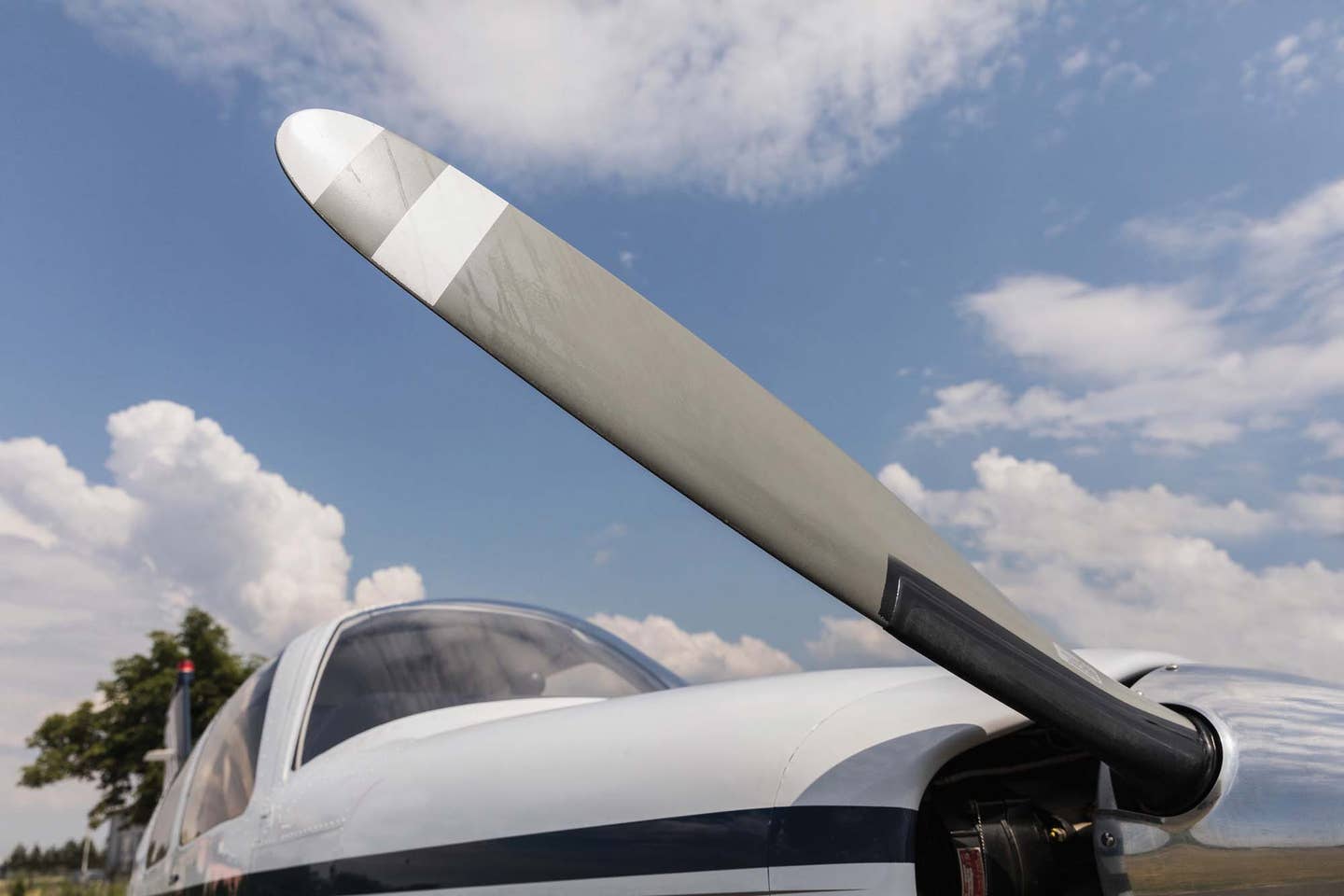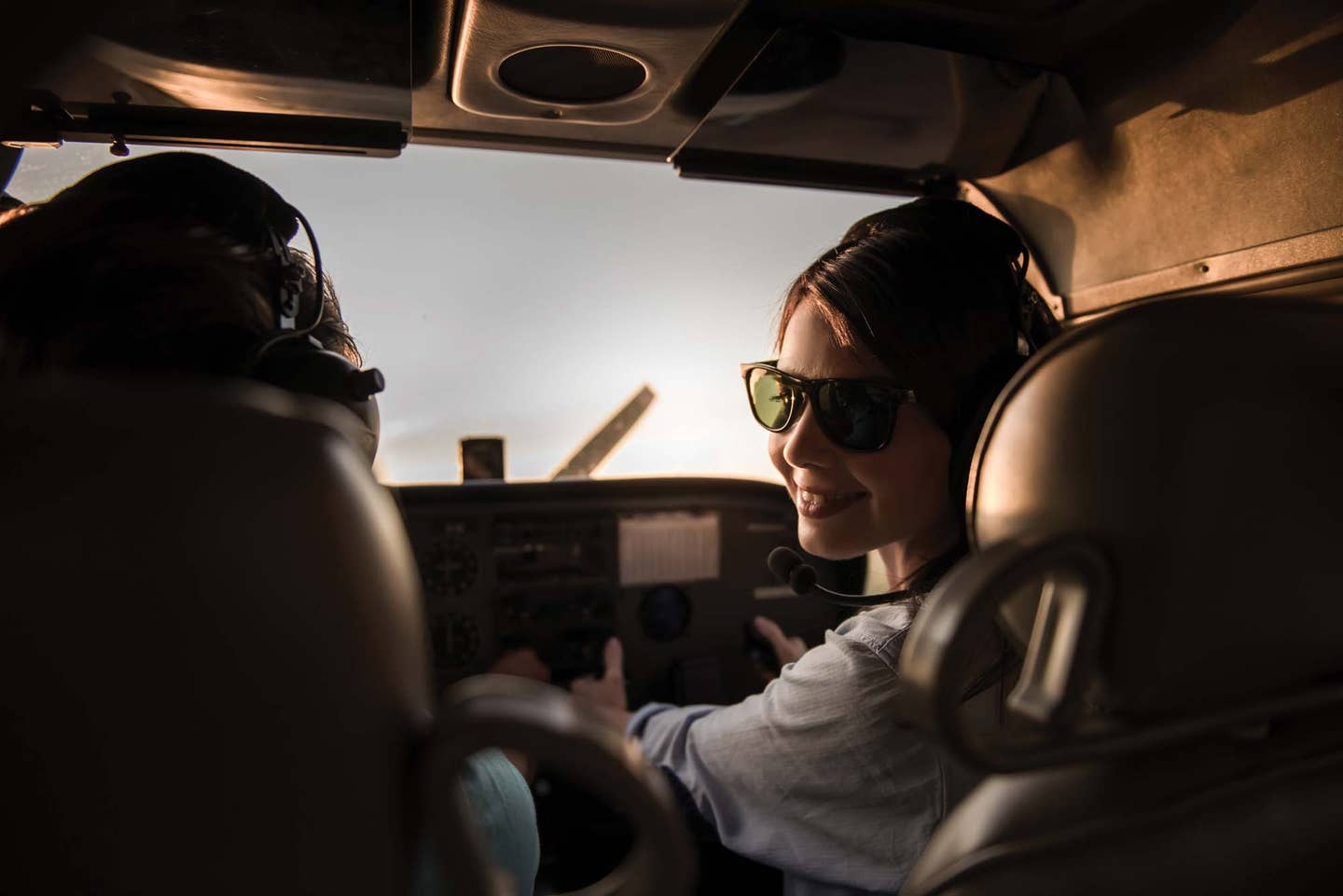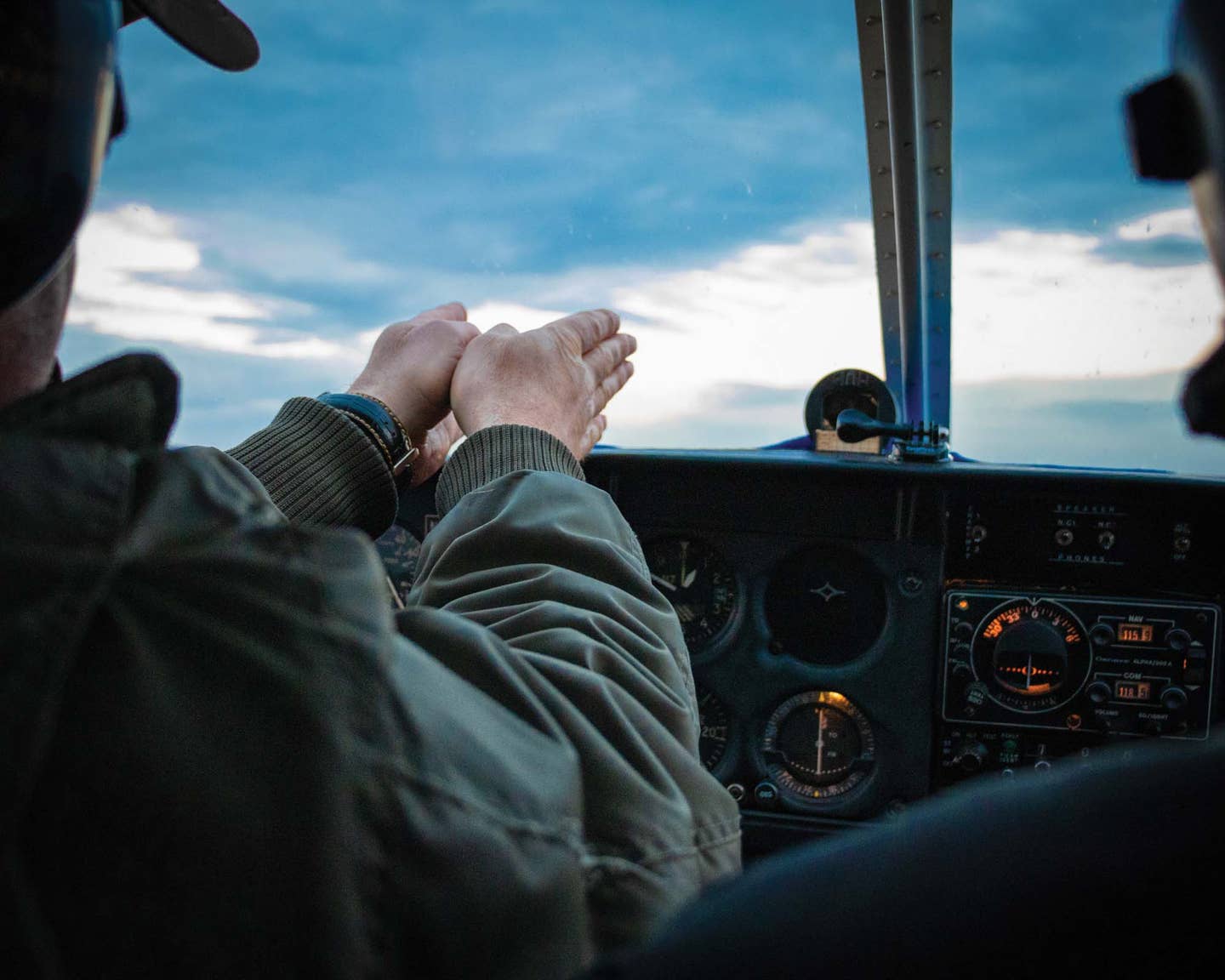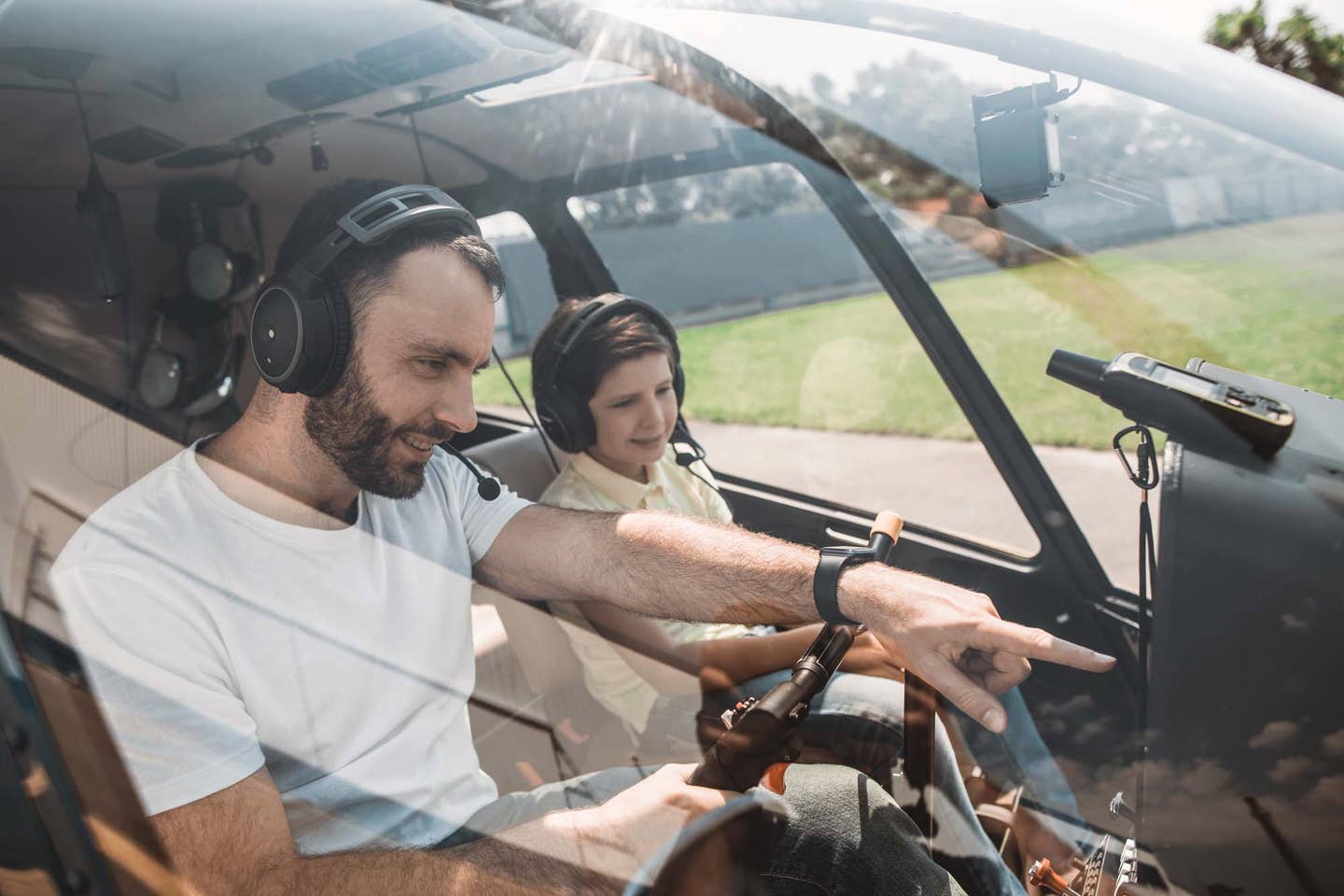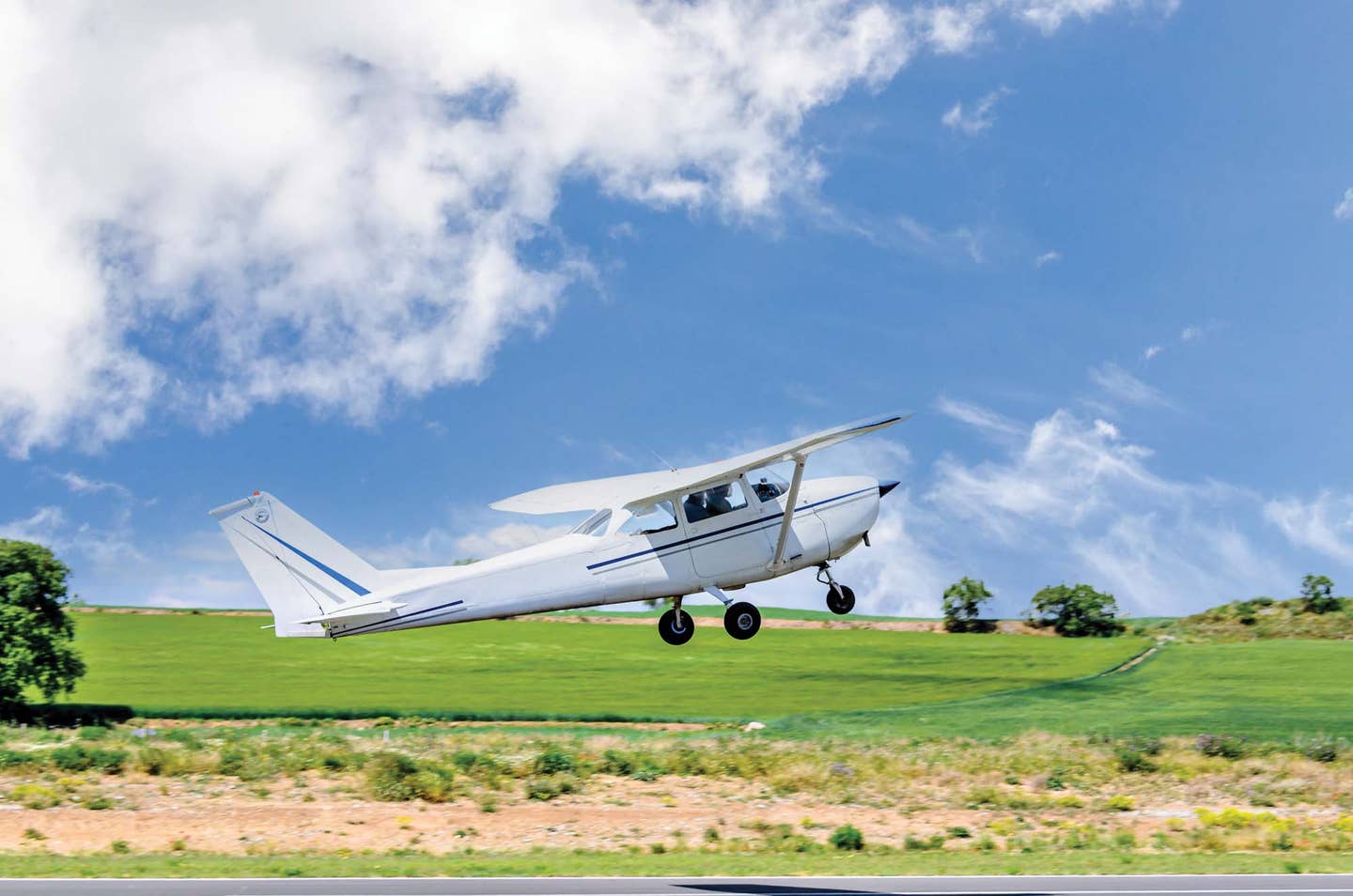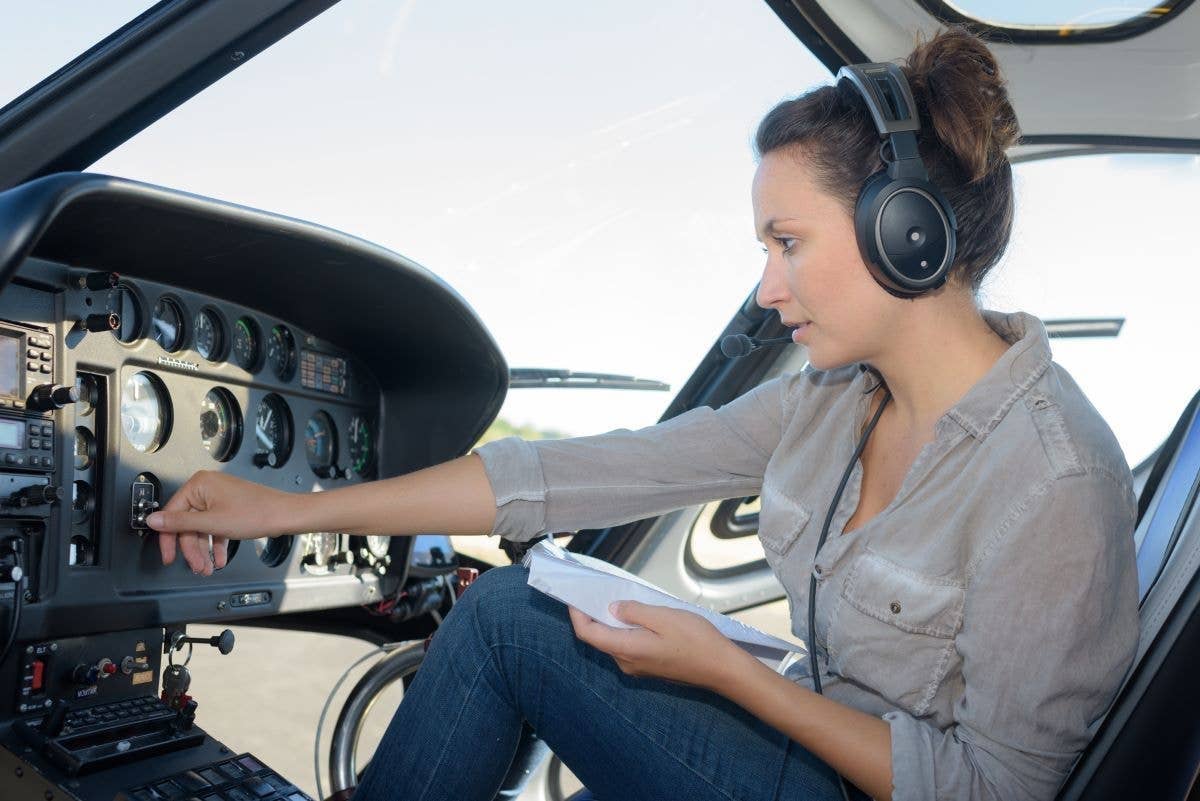Get A Handle On Turbulence
Tips and tricks to spot turbulence and minimize its impact on your ride.

Get a handle on turbulence.
Wouldn't it be nice if every time you flew, it was in smooth air?
That would be ideal, indeed, but unless you're willing to limit your flying to the early morning, late afternoon or evening hours, you're destined to experience turbulence of one kind or another. It's not all bad news, however. You don't have to throw up your hands and say, "Oh, well! I can't change it. So, if I'm going to fly, I'll just have to get used to the turbulence."
The good news is you aren't powerless. You can learn to avoid or at least mitigate the turbulence you experience while flying.
To do that, you must be able to "see" the turbulence. I know that sounds crazy because turbulence, like wind, is invisible. But is it, really? Although you can't see the wind, you can usually pick up on indications the wind is blowing. You know, the telltale signs that give it away, like the movement of leaves on a tree or ripples on a lake indicating the presence of wind. There are just such signs with each type of turbulence.
Recognizing those signs, as well as the conditions and circumstances that cause them, will help you "see" the turbulence and take action to avoid or at least reduce the impact.
So, what does cause the air to become turbulent?
A physics professor might say, "Unstable air is generally caused by temperature or pressure differentials." We can also add the disturbance of airflow as another cause. However, since temperature and pressure aren't visible, we need to describe the sources of turbulence in different terms. Terms that will give us something to "see." Below are several sources of turbulence, what their telltale signs are, and what actions knowledgeable pilots take to avoid or lessen their impact.
High-altitude turbulence, often called clear-air turbulence or CAT, is typically found along the edge of a Jetstream in the upper levels of the atmosphere. Jet streams are relatively narrow bands of strong wind along the border between hot and cold air masses. They're typically found at or near the tropopause at altitudes of 30,000 at the poles to 56,000 feet at the equator and can travel at nearly 200 mph.
The jetstream winds blow from west to east but do shift to the north and the south along the way. The most severe turbulence is on the cold side of the jetstream, where the wind shear is the greatest due to the extreme difference in temperature and air density.
CAT can be encountered anywhere from a few thousand feet above to a few thousand feet below the tropopause. It's typically found in patches, and a change of altitude of as little as 2,000 feet is often enough to exit the turbulence.
Since CAT is virtually invisible, pilots rely on reports from other pilots (PIREPS) to help them avoid the areas and altitudes where CAT has been encountered.
Thermal heating of the Earth is another source of turbulence. A thermal is a vertical section of rising air in the lower altitudes of the Earth's atmosphere. The heating of the Earth's surface from the sun warms the air directly above it, causing it to expand, become less dense than the surrounding air mass, and begin to rise. Because the sun warms water and light-colored areas slower than dark areas of land, the vertical columns of air rise at different speeds. Flying through these columns of air, each rising at different rates, causes choppy turbulence.
And you can spot this kind of turbulence. As the air rises, it cools and condenses its moisture on dust particles, creating clouds. When the moisture condenses, it releases energy known as latent heat, which allows the rising air to cool further, continuing the cloud's ascension. The air stops rising when it has cooled to the same temperature as the surrounding air, and it then gets pushed to the side, where it will begin to descend.
The colder air being displaced at the top of the thermal causes this downward flow surrounding the thermal.
If enough instability is present in the atmosphere, this process will continue long enough for cumulonimbus clouds (thunderstorms) to form, which support lightning and thunder. Generally, thunderstorms require three conditions to form: moisture, an unstable air mass and a lifting force (thermals).
While the storm is first forming, most of the action inside is upward, in the form of updrafts. Pockets of warm, moisture-laden air near the ground rise into cooler, drier air above, condense out their moisture into the water droplets that form the storm cloud, and continue to rise as that condensation adds more heat back into the air pocket.
As the storm continues to grow, it's a rolling, churning mix of rising and sinking air. The friction of falling raindrops in the downdrafts grows stronger as some of the raindrops evaporate into the drier air below the cloud, causing cooling, which forces the air to sink faster. The downdrafts continue to grow stronger as the storm ages and more raindrops fall, until the downdrafts match the strength of the updrafts and eventually dominate them as the storm begins to dissipate.
All thunderstorms, regardless of type, go through these three stages: the developing stage, the mature stage, and the dissipating stage.
Depending on the conditions present in the atmosphere, these three stages take an average of 45 minutes to complete.
If you were flying through the storm cloud as these updrafts and downdrafts were in force, they would turn the flight into a potentially dangerous roller-coaster ride. You can also encounter turbulence flying above or around the storm from the wind shear produced by the interaction of the faster-moving air inside the storms and slower-moving air around them.
Particularly strong downdrafts not only set up powerful winds blowing straight down toward the ground, but they also cause turbulent swirls as they hit the ground, deflect outward and cause rolling air currents to form.
When flying around thunderstorms, it's important to note that what you see with the naked eye is often several storms within what appears to be one storm cloud.
So, while it's true that the life cycle of a thunderstorm averages only 45 minutes, this applies to what's referred to as a cell. Viewing a thunderstorm on radar, you can see the cells where the moisture is the densest. Navigating through the storm while avoiding the areas of the highest potential of turbulence using weather radar is beyond the scope of this article but a very important skill set to acquire.
Since turbulence outside the cloud is most prevalent in front of a storm and can be present in clear air as many as 20 miles in front of a moving thunderstorm, it's advisable to fly behind a storm where the turbulence is much less severe. The anvil at the apex of the storm often indicates the direction of movement.
Mountainous terrain can cause turbulence as winds flow over and around a mountain or mountain range. Friction slows the winds closest to the surface, which interact with the faster airflow higher up and set up a chaotic pattern of rolling, swirling flow between them. On the downwind (or leeward) side of mountains, the swirls can be very large, with strong turbulent wind shears. Turbulence when you're flying through this chaotic flow can be very strong.
Depending upon the wind speed, a mountain wave can be several thousand feet above and several miles downstream of the mountain range, so it pays to be aware of the terrain below you, even if it's thousands of feet below.
I've flown into a leeward mountain wave while 3,000 or 4,000 feet above a range, and the first indication was the aircraft's airspeed began to decline as the autopilot fought to maintain altitude. Turning west, in the direction of the mountain range, we flew out of the leeward, down current and into the rising wave on the windward side. Interestingly, our altitude above the mountains was sufficient to afford us a turbulent-free transition into and out of the mountain wave.
When you fly in and around mountains, it's important always to know the wind direction so you can remain on the windward side of a mountain or mountain range where the winds are flowing upward. If it's necessary to fly on the leeward, or downdraft, side of a mountain or mountain range, it's better to fly perpendicular to the range to limit your exposure to the downdraft.
When flying into and out of airports surrounded by mountains, it's important to keep in mind the prevailing winds, so you can visualize the currents.
Pilots experienced in mountain flying also learn pretty quickly to set limits on wind speed for different airports.
Wake turbulence is another cause of clear-air turbulence.
When a heavy aircraft is flying slowly, as it does on final approach and right after takeoff, its wings are working the hardest to produce the necessary lift, thus creating the maximum differential between the low air pressure above the wing and the high pressure below the wing. The high-pressure-seeking low pressure creates what can be described as a horizontal tornado coming off the wing tips.
These "horizontal tornados," or rotating vortices, can linger in calm air for a significant amount of time after the passage of the aircraft and can cause a small aircraft to roll or lose control on the ground or in the air.
Many aircraft are now made with winglets to reduce the vortices, but it's still advisable to take precautions when you're following a heavy aircraft on approach or takeoff.
Unlike in the picture above, wake turbulence is typically invisible, so it's important to remember when following a heavy aircraft that wake turbulence and wing-tip vortices sink and drift with the wind. To avoid this phenomenon, therefore, you should alter your climb or descent gradient and path to stay above and, to the extent it's possible, upwind from the flight path of the heavy aircraft.
While turbulence has many causes, it also has different levels of severity, which are rated as light, moderate, severe and extreme.
Light turbulence causes slight changes in altitude and/or attitude and airspeed fluctuations of 5 to 15 mph. Light turbulence is generally considered more of a comfort consideration than a safety issue.
Moderate turbulence causes changes in altitude and/or attitude, but the aircraft remains in positive control at all times. Airspeed fluctuates 15 to 25 mph.
Severe turbulence causes large, abrupt changes in altitude and attitude. Aircraft may be momentarily out of control.
Extreme turbulence causing aircraft to be violently tossed about is practically impossible to control.
A PIREP, or pilot report, should be made when turbulence is encountered that's moderate or greater. The report should include location, time (UTC), altitude, severity of the turbulence and if it's in the clouds or in the clear, type of aircraft, and, when applicable, the duration of the turbulence.
Flying in turbulence can't always be avoided, so it's advisable to follow a few recommendations when you find yourself flying in turbulence that's moderate or greater.
"Focus on maintaining ATTITUDE...not ALTITUDE."
Depending upon the severity of the turbulence, you should consider the following recommendations:
1. Slow to your aircraft's turbulence penetration speed.* 2. Attempt to hold wings level but avoid abrupt control inputs to avoid adding to the load factor.
Maintaining attitude is more important than maintaining altitude if the latter might increase the load factor on the airplane.
You might also consider lowering the landing gear if below landing gear operational speed. This will lower the center of gravity of the aircraft and increase drag, which will help mitigate the effects of turbulence.
*An aircraft's turbulence penetration speed is its maneuvering speed calculated for actual weight, since published maneuvering speeds are based on the aircraft at gross weight.
If the Pilot's Operating Handbook (POH) only lists one maneuvering speed and your aircraft is below maximum (max) gross weight, use this formula to calculate an approximate maneuvering speed for your weight.
A good rule of thumb is to reduce maneuvering speed 1% for every 2% the aircraft is below max gross weight. To simplify the math, if you're 20% below gross weight, reduce your maneuvering speed by 10%.
Smooth flying!

Subscribe to Our Newsletter
Get the latest Plane & Pilot Magazine stories delivered directly to your inbox

